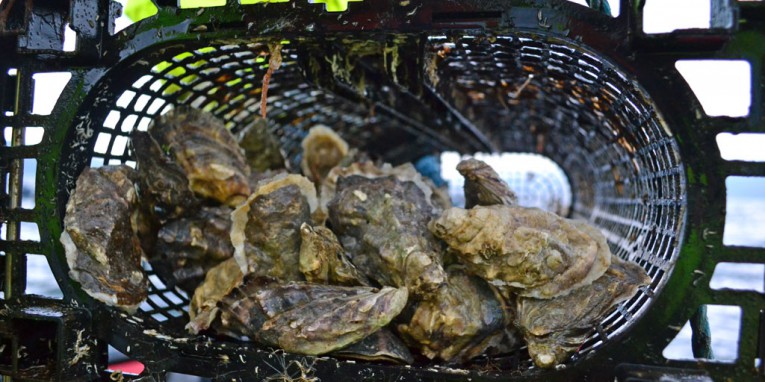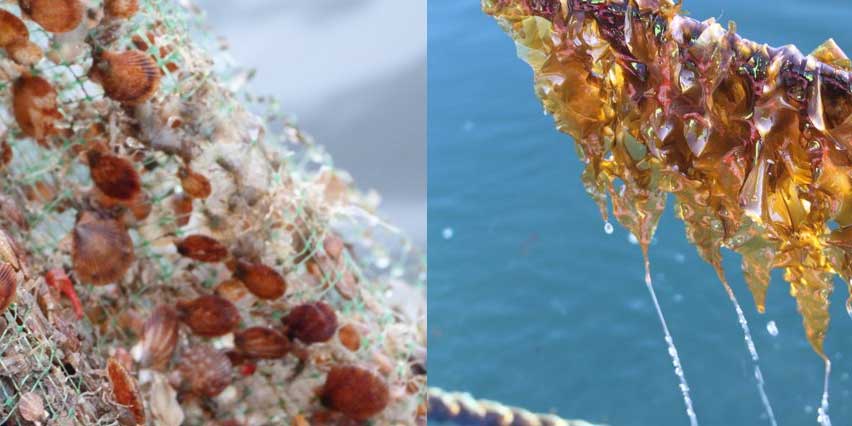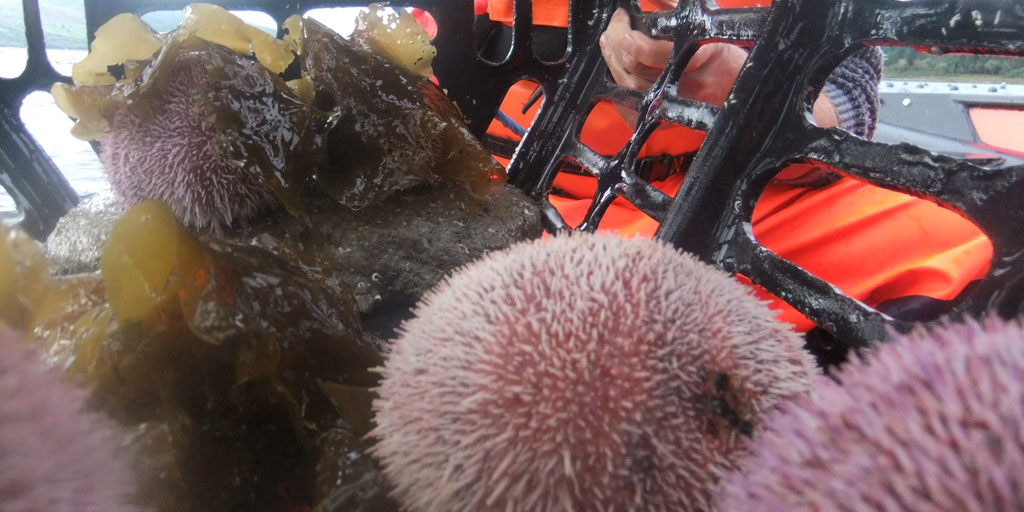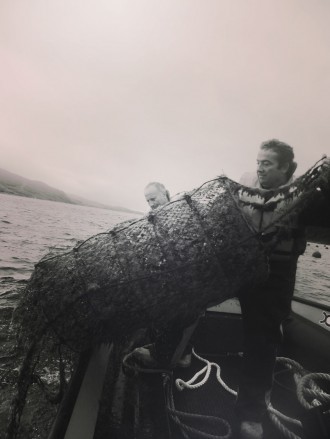Ideal combination
Synonymous with seafood, particularly oysters, Loch Fyne is now experimenting with a new approach to aquaculture that creates multi-level, environmentally friendly ecosystems.

There’s a real buzz about Loch Fyne. The extensive changes and investment in the restaurant and oyster bar itself are repeated outside on the oyster and mussel farms, just across the loch. The old shoreline trestles have recently been replaced with modern baskets that hang from floats and “rumble” the oysters as the tide goes in and out. “Oysters need that agitation to work them into a good shape, otherwise you end up with a shallow oyster with a thin shell and thin meat,” says David Attwood, Loch Fyne Oysters’ aquaculture director. “In the past, we had to pick up a bag and hit it with a stick! This way is much more elegant.”
The farm here produces about 200,000 Pacific, or rock, oysters (Crassotrea gigas) a year, which is relatively small scale but a sustainable amount for the site. The purification systems in the nearby shed can handle a lot more, however.
“We’re a hub,” says David. “We take oysters from small farmers all over Scotland, from Gigha, Mull, Islay, Colonsay and also the west coast of the mainland. Each area has its own characteristics and flavour.” The expansive firm has also just snapped up one of only two oyster hatcheries in the UK along with a 250-hectare growing site in Morecambe Bay, where they now have about 6 million oysters on trestles in varying degrees of readiness. Even with this additional capacity they still can’t meet demand, which is going through the roof.
Right next to the oyster baskets are the floats for the mussels, introduced here about a decade ago. “We started with the longline system,” says David. “Basically, you attach one end of a rope to a float, put a load of plastic pegs on it, stick half a house brick on the other end and chuck it in. That might sound like a licence to print money, but it wasn’t as simple as that! One day, a few hundred eider ducks landed and cleaned the whole farm out, hoovering up the mussels right down to 10m.”
But they learned, grew and have now just introduced a load of new equipment from New Zealand, where green lip mussels are cultivated on a large and highly mechanized scale. Instead of individual lines, they now use a continuous rope system, which loops up and down from float to float, making management and harvesting much simpler.
The farm here produces about 180 tonnes of mussels a year, but the recent acquisition of a company called Hebridean Mussels on the Isle of Lewis will increase capacity by up to 1,000 tonnes. “Given that Scotland’s entire output is only 7,000 tonnes, that might sound like a lot, but it’s a drop in the ocean compared with operations in Ireland, France and Spain,” says David.
Both oysters and mussels have a good sustainability story to tell. Oysters purify the seawater, sieving out the algae, which is a sink for carbon dioxide, thereby ameliorating carbon emissions and ocean acidification. They don’t need any input – no feed, fertilisers, medicines or antibiotics – and they are proven to help increase biodiversity too. Mussels are even better, because their spat is naturally occurring and so there is no need for the energy of a hatchery.
Clearly there are advantages to combining farms like this, with shared infrastructure, maintenance staff and so on. But that’s only scratching the surface of the potential benefits. Working with co-investor Scottish Salmon Company, Loch Fyne has developed a pilot for what’s called Integrated Multi-trophic Aquaculture. This essentially means farming various species alongside each other to create a balanced, mutually beneficial ecosystem that reduces both cost and environmental impact, and potentially provides new products into the bargain.

A major motivation is to ameliorate the effects of salmon farming, which is criticized for polluting the surrounding water with high levels of excrement and dissolved food (which is why sea lochs, with their high volumes of tidal water exchange, are favoured sites), and can also lead to problems with sea lice. The pilot site sits alongside a salmon farm and consists of a large grid of shellfish lines, where mussels, oysters and queen scallops grow alongside seaweed and sea urchins. Every time the tide changes, it carries water from the salmon farm through the grid, which acts as a bio filter.
“The seaweed takes up the phosphates and nitrates from the dissolved food and output from the salmon: it’s like feeding it baby bio,” says David. “The dissolved organics also stimulates localised production of phytoplankton, which is the foundation of the marine food chain. That’s taken up by the filter-feeding shellfish, and the mussels can eat shed sea lice too. The sea urchins graze on the sediment at another trophic level below and we’re looking at other bottom feeders like sea cucumbers and whelks too.”
Loch Fyne is already selling plenty of seaweed, called Alaria esculenta, for food use: harvested, dried, rolled and milled it goes into a variety of products, such as oat cakes and condiments. Very fast-growing, it can be seeded in January and harvested in May, and is “full of all the right things; all the natural ingredients you could want,” says David. They are not yet selling the sea urchins as food yet, but they are growing and selling them for brood stock.

IMTA is not a new idea. It has been practiced for centuries in freshwater systems, particularly in China, but although its potential benefits are well understood, it is currently only practiced in the EU by a few companies, such as the award-winning organic Scottish salmon company Loch Duart and now Loch Fyne. A European research project called IDREEM (Increasing Industrial Resource Efficiency in European Mariculture) is currently focused on developing IMTA on a commercial scale, working with 14 industrial and research partners, including Loch Fyne, which is now also looking at developing two more sites.
One useful output, says David, might be some kind of IMTA standard, to help consumers choose products based on this very clever, eco-friendly approach. Watch this space!






